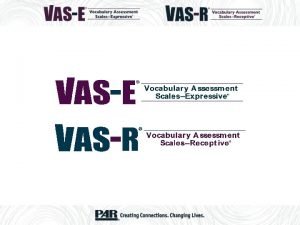Perceptual learning on ecologically typical and atypical musical

- Slides: 1

Perceptual learning on ecologically typical and atypical musical timbres Kristin Cox, Megan Loveland, & Nestor Matthews Department of Psychology, Denison University, Granville OH 43023 USA Background and Purpose Experiment 1 Experiment 2 Recent discoveries indicate that non-musicians have stunningly accurate memory for the original musical key of popular tunes 1. Musical transients are also salient in detecting differences in timbre 2 - a subjective quality of pitch. The purpose of the present study is to test these phenomenon with single piano notes and novel melodies. Method Exp. 1 – Participants listened to original version excerpts of 4 popular tunes: “Mrs. Robinson, ” “Imagine, ” “I’ll Be There for You” and “Livin’ La Vida Loca”. Participants were then presented 160 pitch-altered excerpts to compare to the original. Excerpts were also played forward and backward as well as with and without lyrics. Exp. 2 – Participants made sharper/flatter judgments about two separate piano tones 3 played forward and backward, and in 50 cent intervals higher and lower than the original with a maximum of 250 cents. Exp. 3 –Melodies (see below) incorporating the same tonalities as exp. 2 were created, and altered according to the same cent shifts as well as forward/backward. All participants were exposed to pre and post sessions, but split into 2 statistically similar groups for training, listening to either forward or backward excerpts only. The task was the same as in exp. 2. Melody X Melody Y Experiment 3 Discussion Our findings replicate Schellenberg and Trehub (2003), showing that pitch memory is accurate for familiar melodies. The present findings also show that pitch memory is above chance for ecologically atypical timbres (backward-played songs) despite a strong forward superiority effect for familiar tunes. This effect appears to be limited to melodies, as the results from Experiment 2 show no significant difference between the forward and backward conditions for single notes. When using novel melodies, results show direction specific training effects; either forward or backward superiority effects can be generated with training. Furthermore, participants appear to use a melodyspecific strategy as evidenced in Experiment 3 by d’ values greater than zero for each overlapping delta cent value in the two melodies. The Bottom Line Non-musicians show a strong forward-superiority effect when listening to familiar tunes, but can acquire a similar backward-superiority effect through training. Remarkably, performance is above chance levels for ecologically atypical timbres in both familiar and unfamiliar tunes. Results also show that individuals use a melody-specific strategy instead of a frequencyspecific strategy to form memory for original key. References 1. Schellenberg & Trehub (2003) PMID: 12741751 2. Thayer, R. J. (1974). The effect of the attack transient on aural recognition of instrumental timbres. Psychology of Music, 2, 39 -52. 3. Pantev, Oostenveld, Engelien, Ross, Roberts, Hoke (1998) PMID: 9572139

